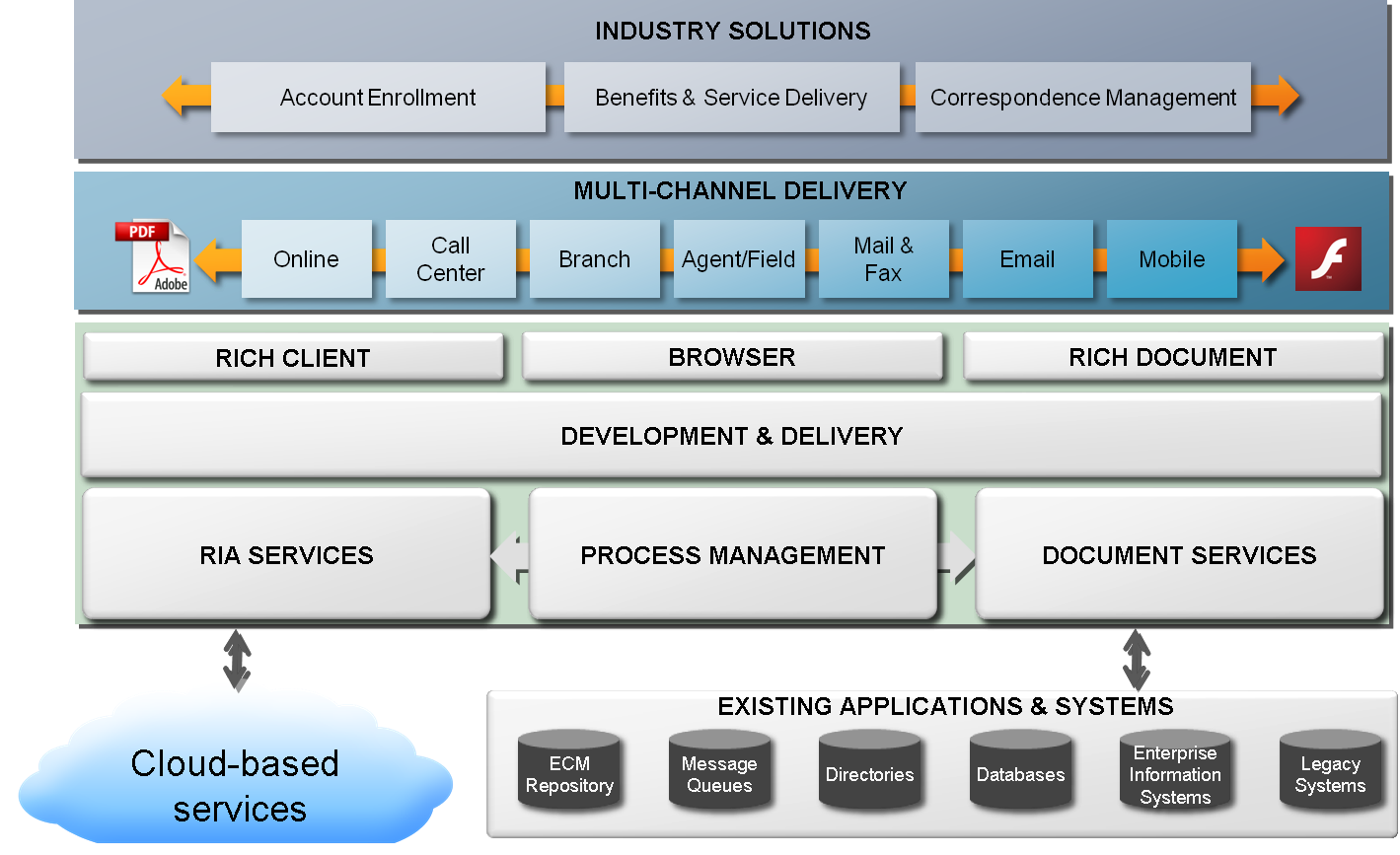Adobe and the Enterprise
What do you associate the name Adobe with? Well for me, it says Postscript and PDF and therefore Acrobat; and therefore documents and personal computing. The Enterprise and Adobe, for some of us, don’t, at first glance, fit together. But that is not the case, as I learnt when I attended the first EMEA Analyst conference organised by Adobe in the middle of November.
My interest in Adobe is around their BPMS offerings (Adobe LiveCycle ES) and I have met with Adobe personnel on a number of occasions and been quietly impressed by their understanding of the needs of organisations looking at improving their business processes through automation (some of you may have read a previous article I wrote in March 2009 – Verticalising BPM with Adobe). Adobe has made a number of strategic acquisitions over the last 4 years; these include Macromedia and, just recently, Omniture[1], which have allowed Adobe to widen its product portfolio, as well as acquisitions such as Scene7 and Business Catalyst that have provided extensions to the Adobe platform.
The message from Adobe’s Business Productivity Business Unit is now centred on “deliver solutions to address business challenges through the use of common application patterns using unique technology differentiation to deliver immediate business benefits”. Adobe have recognised that in today’s economic situation it is all about delivering not only the solution but also the ROI within a very short period of time (my reckoning is around about 45 day maximum!). But this is not just words; it is actual deliverables to markets such as:
- Government, with solutions for Courts Automation and Tax Filing,
- Financial Services, with solutions for Policy Issuance and Claims Processing and Customer Communications Management
- Manufacturing, with solutions for Product Development Collaboration and Field Service Management
- Life Sciences, with solutions for Electronic Lab Notebook and Clinical Trial Management.
On top of these solutions, Adobe with its partners has developed a series of frameworks called “Solution Accelerators”; these include: Account Enrolment, Correspondence Management, Electronic Submissions and Human Capital Applications. What is a Solution Accelerator? It is a process defined in LiveCycle by Adobe and/or an Adobe partner based on their experience of implementing particular types of business processes. This base framework can be extended and customised by customers, partners or Adobe Consulting.
Adobe has, in addition, realised that the workforce is now made up of a large number of people who have grown up with computers; these people are used to using websites such as Facebook and YouTube to communicate with their network and in addition to using mobile application on phones such as iPhone. We are now in a world where rich internet applications are the norm. And we do this without realising it! All this is driving the way people want to collaborate so that we can connect people in the context of business processes. The second area is that users expect more from their enterprise applications and therefore these applications need to be customised to meet individual requirements. Finally, line of business, and therefore IT, expect shorter development times with the ability to customize, adapt and maintain.
Adobe LiveCycle already has a customer base of over 5000 across all of the major verticals. So how is Adobe going to provide the necessary solutions to the Enterprise? Well, obviously, the solutions piece is one part. So what are the rest? Kumar Vora, Adobe’s VP & GM for LiveCycle, explained that Adobe saw the convergence of rich internet applications with documents. Adobe will allow the provision of an experience to the end user that is personalized and provides a responsive experience, with the right formats for right purposes with multi-channel communication capabilities. For those employees of an organisation that are customer-facing, Adobe sees the need for the provision of intuitive workspaces and guided experiences, as well as a collaborative that allows experience to be shared and decisions to be made quickly through the streamlining of business process. For the process owner in a business the streamlined process has to be end to end whilst allowing organizational transparency and process agility. For IT personnel, this sort of user environment means that they need to able to use agile techniques such as model-driven application development, with broad document and RIA services, whilst working in cross skill teams.

Figure 1: Adobe’s Enterprise Services (Source: Adobe)
This vision cannot be achieved by Adobe on its own and, quite rightly, they are investing heavily in their partner programmes to extend their reach. What will be interesting to see is how this vision pans out of the next 12 months. I can see the potential and think many organisations will understand the premise on which the vision is built. However, Adobe is not alone in putting together solutions along the lines I have described. So the big question mark is who will deliver best for you, the end user? And that is based on who do you believe and how have they delivered in the recent past? To both of these questions, Adobe, in my view, is able to hold up their hand to say “we have”.
[1] Stephan Van Herck, Vice President EMEA for Adobe explained that the Omniture acquisition allowed the company to expand and grow into the analytics and optimisation market with particular relevance to mission critical enterprise applications. In addition Omniture provides a diversification of Adobe technology into the SaaS market.